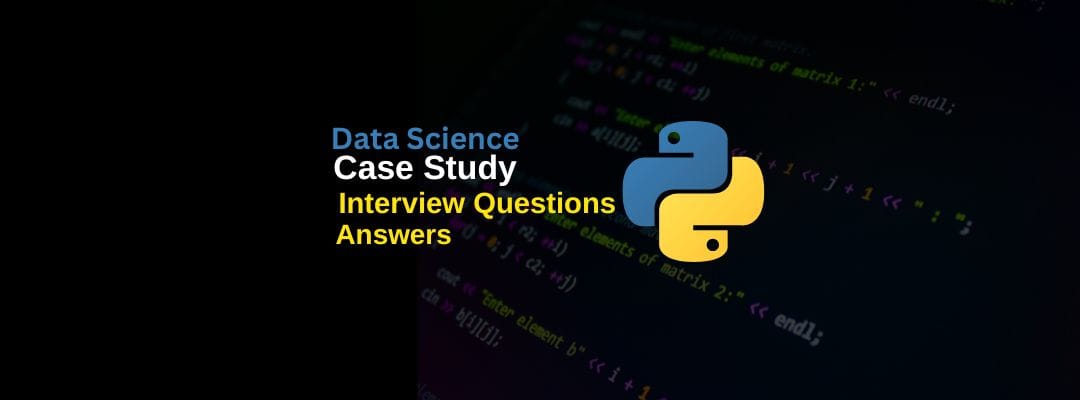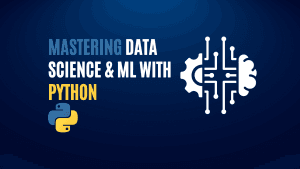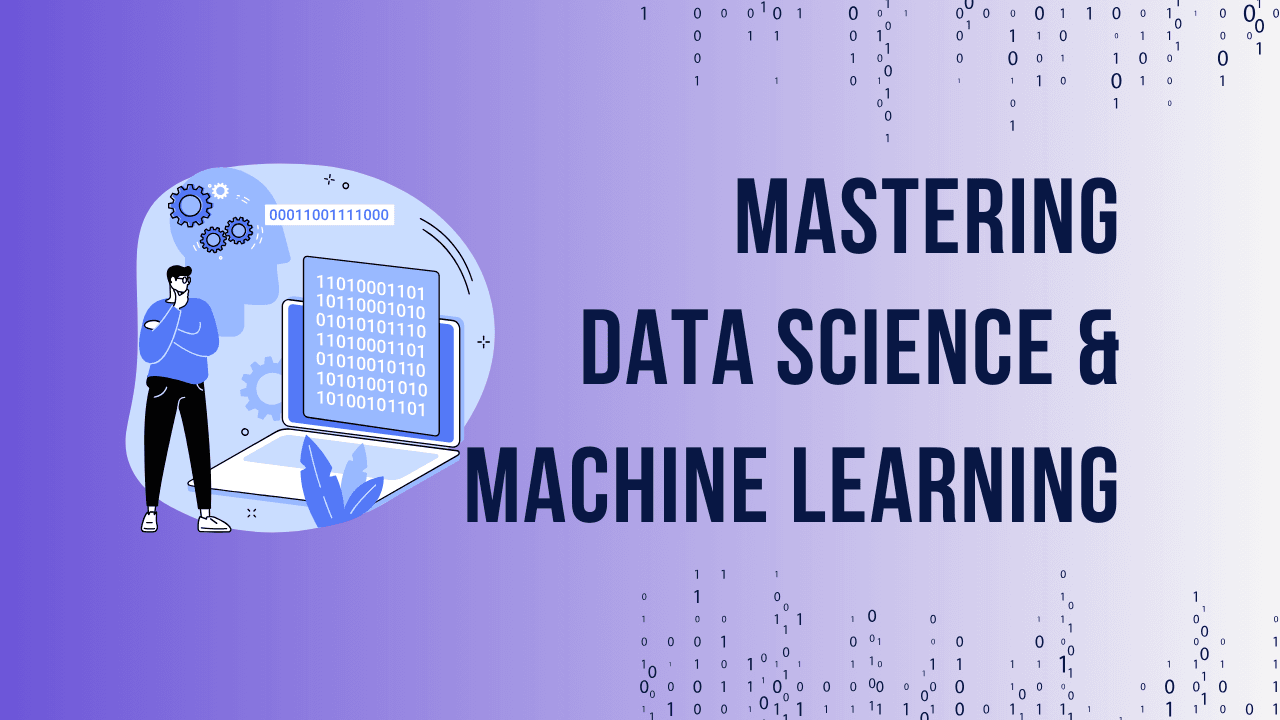Ready to take you Data Science and Machine Learning skills to the next level? Check out our comprehensive Mastering Data Science and ML with Python course.
Table of Contents
ToggleIntroduction to Data Science Case Study Interviews
If you’re gearing up for a data science interview, you’ve probably come across case study interviews. These are designed to evaluate your ability to handle real-world problems, simulate working conditions, and test both your technical and problem-solving skills. In this guide, we’ll break down common data science case study interview questions, how to approach them, and provide sample answers to help you succeed.
Why Case Studies Matter in Data Science Interviews
Case studies are more than just technical tests—they’re a way for interviewers to see how you think, how you approach a problem, and whether you can make data-driven decisions in a practical scenario. It’s one thing to know the theory, but quite another to apply that knowledge effectively when faced with complex data challenges.
Common Themes in Data Science Case Studies
Case studies are more than just technical tests—they’re a way for interviewers to see how you think, how you approach a problem, and whether you can make data-driven decisions in a practical scenario. It’s one thing to know the theory, but quite another to apply that knowledge effectively when faced with complex data challenges.
Ready to take you Data Science and Machine Learning skills to the next level? Check out our comprehensive Mastering Data Science and ML with Python course.
Problem-Solving with Data
Most data science case studies revolve around problem-solving. You’ll need to identify key issues, define your goals, and use data to find solutions. This could be anything from identifying customer behavior trends to predicting stock prices.
Predictive Modeling Scenarios
Predictive modeling is frequently part of case studies. Whether you’re working on customer churn prediction or forecasting sales, you’ll need to demonstrate your ability to build models that can forecast future trends based on historical data.
Data Cleaning and Preprocessing
The quality of your model is only as good as the data you use. You’ll often be tasked with cleaning and preprocessing messy, incomplete datasets to make them suitable for analysis. This might involve handling missing values, outliers, or normalizing data.
Ready to take you Data Science and Machine Learning skills to the next level? Check out our comprehensive Mastering Data Science and ML with Python course.
Preparing for a Data Science Case Study Interview
Researching the Company’s Data Challenges
Before your interview, research the company and the kinds of data they handle. If they’re an e-commerce company, for instance, be ready to talk about sales data, customer segmentation, or A/B testing.
Reviewing Technical Skills and Tools
Brush up on the tools and technologies you’ll likely need, such as Python, R, SQL, and data visualization tools like Tableau or Power BI. Make sure you’re comfortable with machine learning libraries like scikit-learn and TensorFlow.
Structuring Your Approach to Problem Solving
A structured approach is key in any case study. Begin by clarifying the problem, understanding the dataset, and breaking the solution into manageable steps. Consider using frameworks like CRISP-DM (Cross-Industry Standard Process for Data Mining).
Ready to take you Data Science and Machine Learning skills to the next level? Check out our comprehensive Mastering Data Science and ML with Python course.
Sample Data Science Case Study Questions
1: Predictive Model for Customer Churn
You’re given a dataset of customer activities over the past year. How would you build a model to predict customer churn?
Answer Explanation
Start by exploring the dataset to understand key features like customer activity, engagement, and demographics. Clean the data to handle missing or inconsistent values. For model building, use algorithms like Logistic Regression, Random Forest, or XGBoost. Evaluate model performance using accuracy, precision, recall, and AUC-ROC.
2: Recommendation System Design
Design a recommendation system for an online retail platform. How would you go about it?
Answer Explanation
Break the task into collaborative filtering and content-based filtering. Use customer purchase history, item similarities, and user behavior patterns to recommend relevant products. Factor in scalability and personalization when explaining your model’s performance.
3: Fraud Detection Using Machine Learning
Design a recommendation system for an online retail platform. How would you go about it?
Answer Explanation
Break the task into collaborative filtering and content-based filtering. Use customer purchase history, item similarities, and user behavior patterns to recommend relevant products. Factor in scalability and personalization when explaining your model’s performance.
Key Metrics to Focus On
Accuracy
Accuracy tells you how many predictions were correct, but it’s not the only metric to focus on, especially if you’re dealing with imbalanced datasets.
Precision and Recall
Precision is about how many positive predictions were actually positive, while recall tells you how many actual positives were caught by the model. Both are crucial for tasks like fraud detection.
F1 Score and AUC-ROC
The F1 Score balances precision and recall, providing a better measure for imbalanced classes. AUC-ROC helps you visualize how well your model distinguishes between classes.
Ready to take you Data Science and Machine Learning skills to the next level? Check out our comprehensive Mastering Data Science and ML with Python course.
Real-World Data Science Case Study Examples
Example 1: E-commerce Sales Forecasting
This case study involves using historical sales data to predict future demand for products.
Example 2: Sentiment Analysis for Social Media
In this case, you analyze social media posts to determine public sentiment about a product or service.
Final Tips for Acing a Data Science Case Study Interview
Practice regularly with mock case studies, stay updated on the latest industry tools and techniques, and always keep the business goal in mind when crafting your solutions.
Conclusion
Data science case study interviews can be challenging, but with the right preparation and mindset, you can demonstrate your analytical and technical skills effectively. Remember, it’s not just about getting the right answer—it’s about showing your process, approach, and ability to solve real-world problems.
FAQs
What is the best way to prepare for a case study in data science?
Practice mock case studies, understand the company’s data challenges, and review essential tools and algorithms.
How important is coding in a data science case study interview?
Coding is crucial as it demonstrates your technical abilities. You should be comfortable with Python, R, and SQL.
What should I do if I don’t understand the problem in the case study?
Clarify the problem by asking questions. It’s better to confirm details upfront than to proceed with incorrect assumptions.
How do I choose the right model for a data science case study?
Start with a simple model and gradually test more complex ones. Use evaluation metrics like accuracy, precision, and recall to choose the best model.
How can I improve my presentation skills for case study interviews?
Practice presenting your solutions clearly, using visualizations and step-by-step explanations to walk the interviewer through your thought process.



